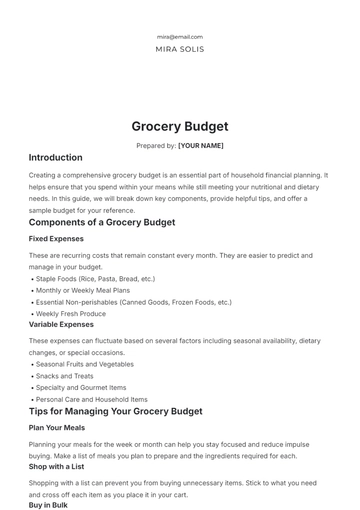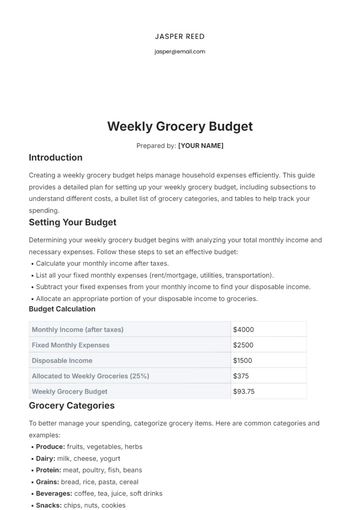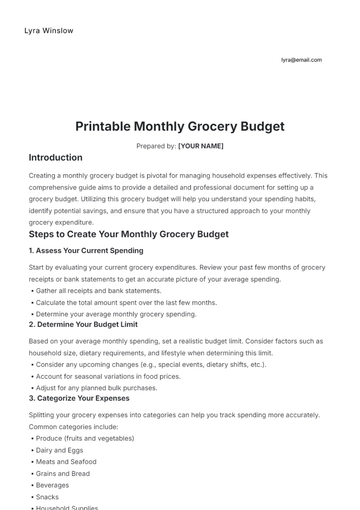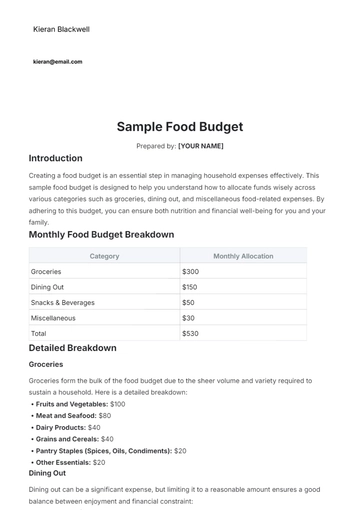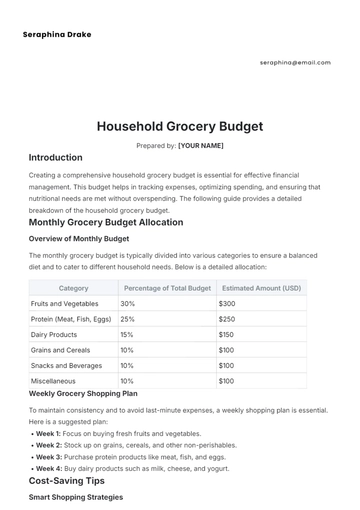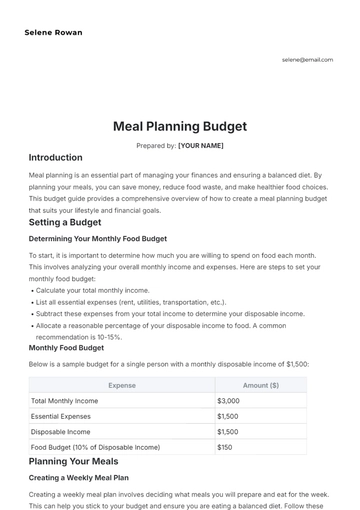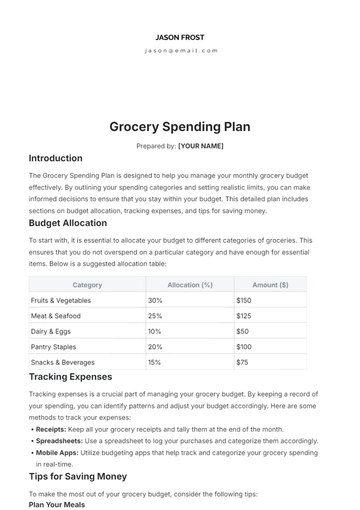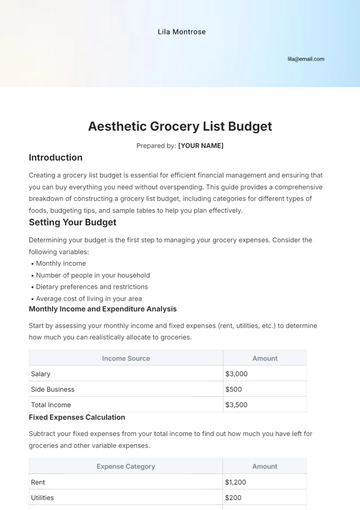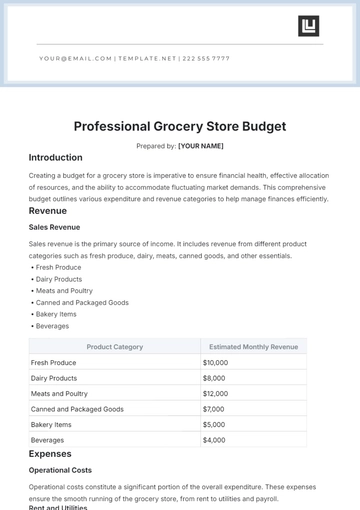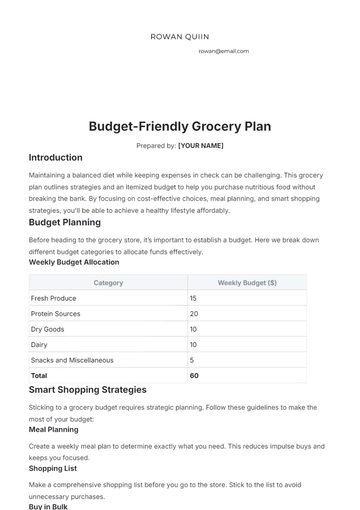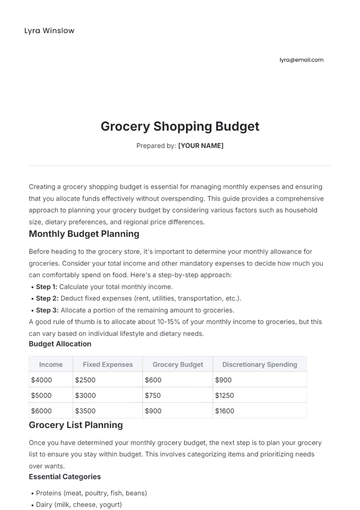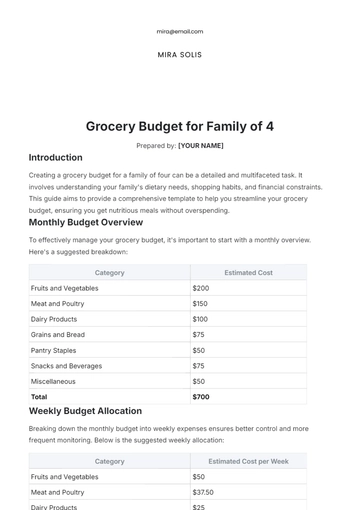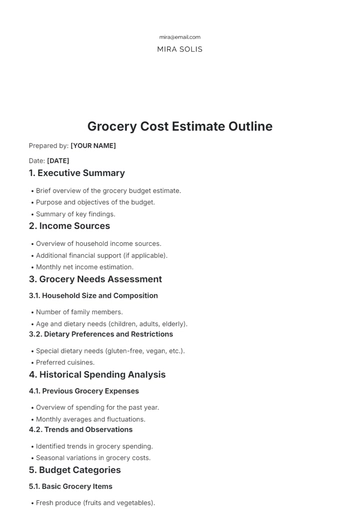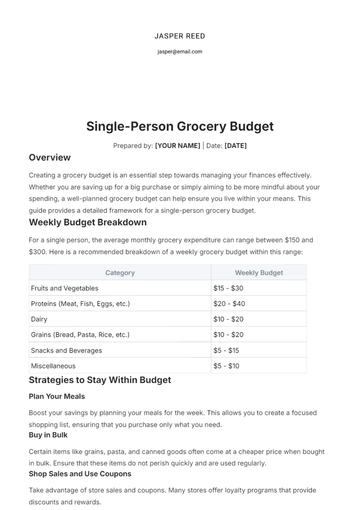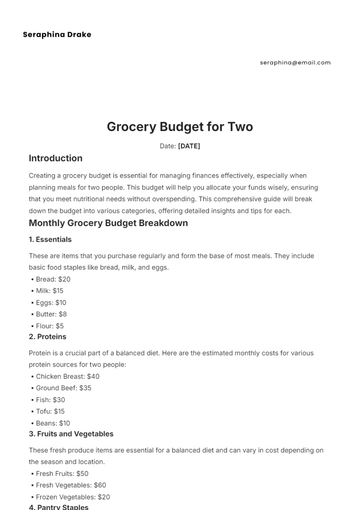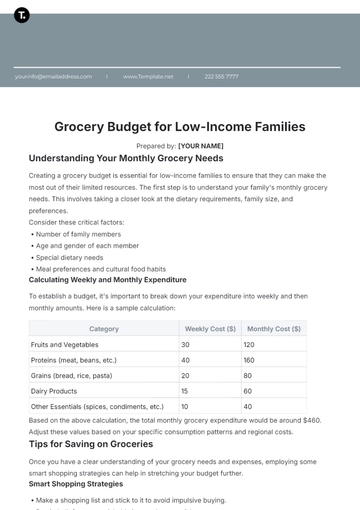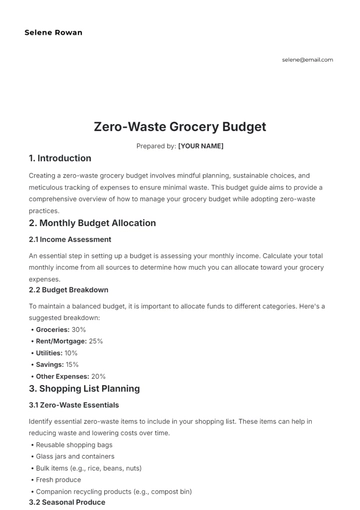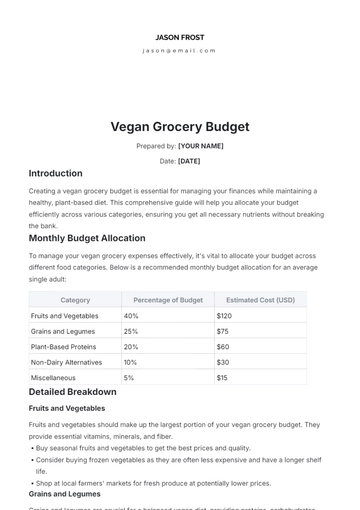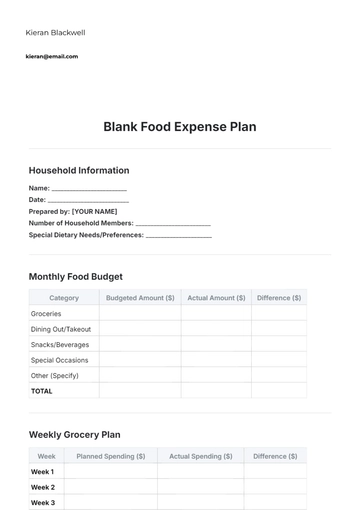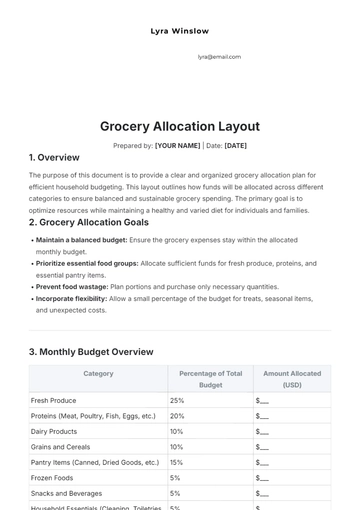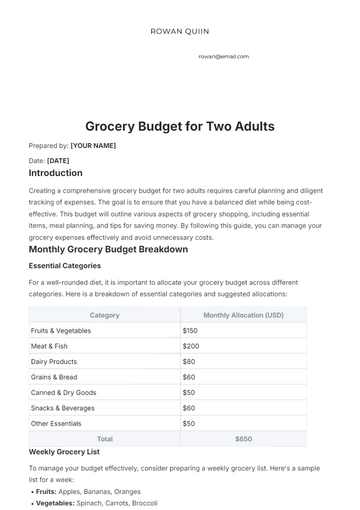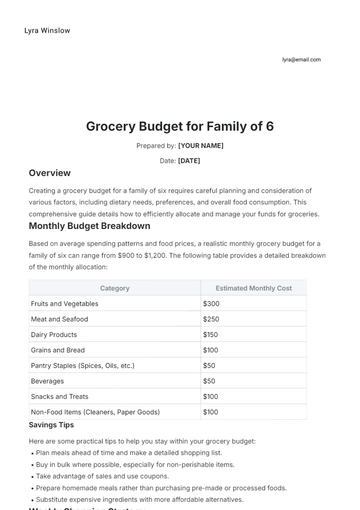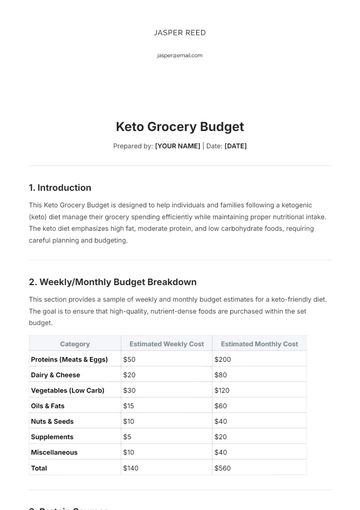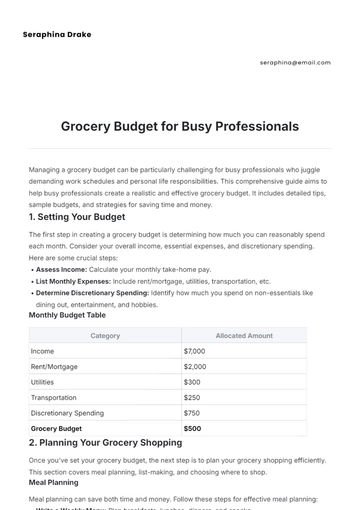Free Professional Grocery Store Budget
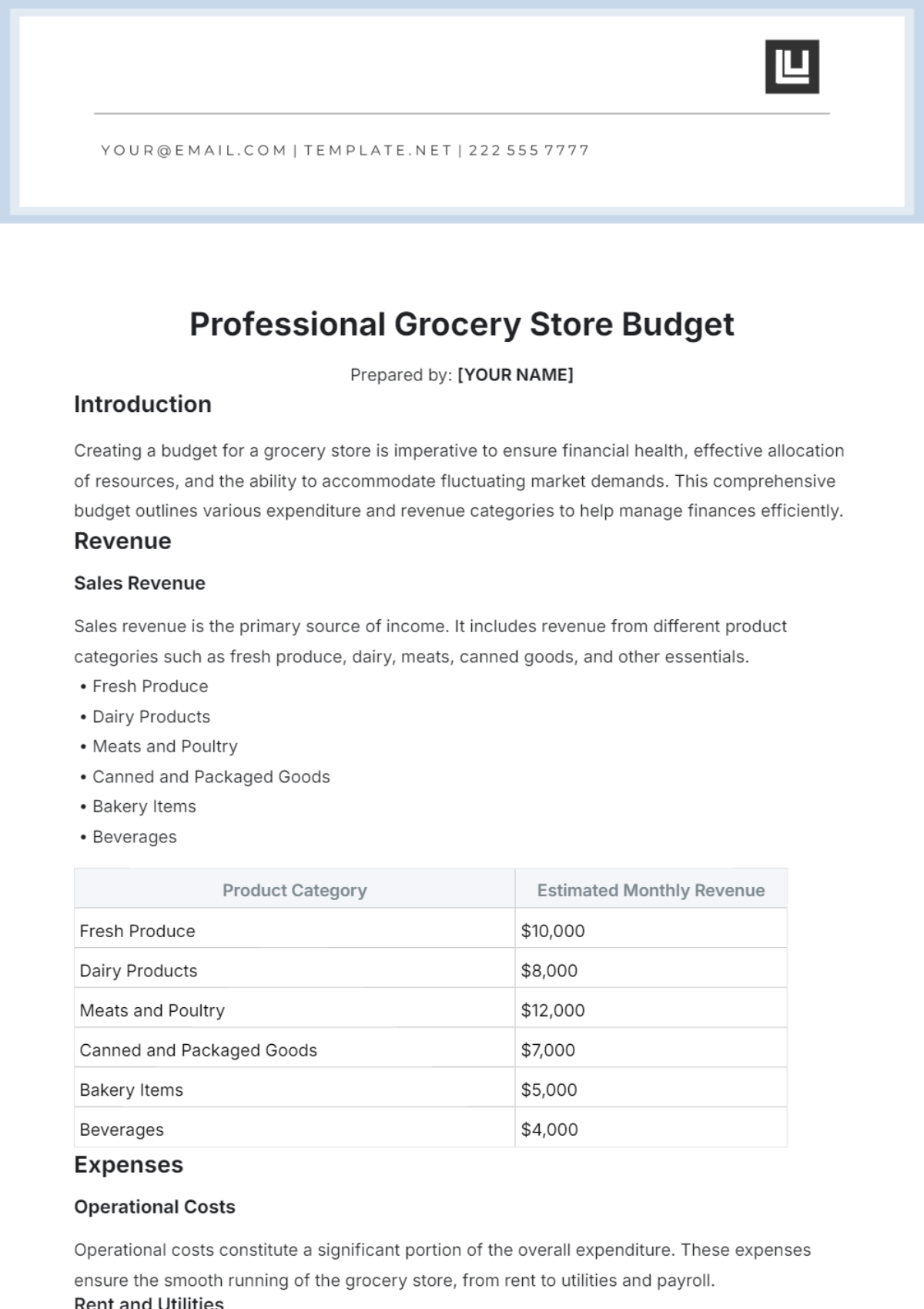
Prepared by: [YOUR NAME]
Introduction
Creating a budget for a grocery store is imperative to ensure financial health, effective allocation of resources, and the ability to accommodate fluctuating market demands. This comprehensive budget outlines various expenditure and revenue categories to help manage finances efficiently.
Revenue
Sales Revenue
Sales revenue is the primary source of income. It includes revenue from different product categories such as fresh produce, dairy, meats, canned goods, and other essentials.
Fresh Produce
Dairy Products
Meats and Poultry
Canned and Packaged Goods
Bakery Items
Beverages
Product Category | Estimated Monthly Revenue |
|---|---|
Fresh Produce | $10,000 |
Dairy Products | $8,000 |
Meats and Poultry | $12,000 |
Canned and Packaged Goods | $7,000 |
Bakery Items | $5,000 |
Beverages | $4,000 |
Expenses
Operational Costs
Operational costs constitute a significant portion of the overall expenditure. These expenses ensure the smooth running of the grocery store, from rent to utilities and payroll.
Rent and Utilities
Rent and utility bills are fixed monthly expenditures that include the cost of leasing the property and utility bills.
Rent: $3,000 per month
Electricity: $800 per month
Water: $200 per month
Gas: $100 per month
Payroll
Salaries and wages for store employees such as cashiers, stock clerks, managers, and security staff.
Cashiers: $4,000 per month
Stock Clerks: $2,500 per month
Managers: $3,000 per month
Security Staff: $1,500 per month
Inventory
The cost of ingredients and goods purchased for sale directly impacts the store's gross profit. Specific inventory categories include:
Fresh Produce: $5,000 per month
Dairy Products: $4,000 per month
Meats and Poultry: $6,000 per month
Canned and Packaged Goods: $3,500 per month
Bakery Items: $2,500 per month
Beverages: $2,000 per month
Marketing and Advertising
Funds allocated for marketing and advertising are essential for attracting new customers and maintaining existing ones. Activities could include print advertising, social media campaigns, and promotional events.
Print Advertising: $500 per month
Online Advertising: $1,000 per month
Promotional Events: $300 per month
Maintenance and Repairs
Regular maintenance and unforeseen repairs ensure the store operates without disruptions.
Routine Maintenance: $200 per month
Repairs and Replacements: $300 per month
Miscellaneous Expenses
These are unforeseen or variable expenses that could fluctuate monthly.
Office Supplies: $100 per month
Legal and Accounting Fees: $200 per month
Miscellaneous: $150 per month
Profit and Loss Statement
A summary of the projected profit and loss will provide an overview of the store's financial health.
Revenue | Amount |
|---|---|
Sales Revenue | $46,000 |
Expenses | Amount |
|---|---|
Rent and Utilities | $4,100 |
Payroll | $11,000 |
Inventory | $23,000 |
Marketing and Advertising | $1,800 |
Maintenance and Repairs | $500 |
Miscellaneous Expenses | $450 |
Total Revenue: $46,000
Total Expenses: $40,850
Net Profit
The Net Profit is derived as follows:
Net Profit = Total Revenue - Total Expenses
Net Profit = $46,000 - $40,850
Net Profit = $5,150
Conclusion
Effective budgeting is crucial for the sustainability and growth of a grocery store. By meticulously planning for revenue and expenses, store owners can make informed decisions, prepare for contingencies, and ultimately achieve financial success.
- 100% Customizable, free editor
- Access 1 Million+ Templates, photo’s & graphics
- Download or share as a template
- Click and replace photos, graphics, text, backgrounds
- Resize, crop, AI write & more
- Access advanced editor
For business or personal use, the Professional Grocery Store Budget Template from Template.net provides a thorough and organized way to manage your grocery expenses. Fully customizable and editable in our AI Editor Tool, this template allows you to track purchases, set budget limits, and ensure precise financial planning. Get it now!
You may also like
- Budget Sheet
- Personal Budget
- Non Profit Budget
- Monthly Budget
- Project Budget
- HR Budget
- Company Budget
- Home Budget
- Weekly Budget
- College Budget
- Business Budget
- Construction Budget
- Small Business Budget
- Hotel Budget
- Annual Budget
- Home Renovation Budget
- Household Budget
- Student Budget
- Grocery Budget
- Marketing Budget
- Corporate Budget
- Startup Budget
- Manufacturing Budget
- Church Budget
- University Budget
- Annual Budget Plan
- Event Budget
- Operating Budget
- Travel Budget
- Food Budget
- IT and Software Budget
- School Budget
- Real Estate Budget
- Sales Budget
- Conference Budget
- Budget Finance
- Freelancer Budget
- Budget Advertising
